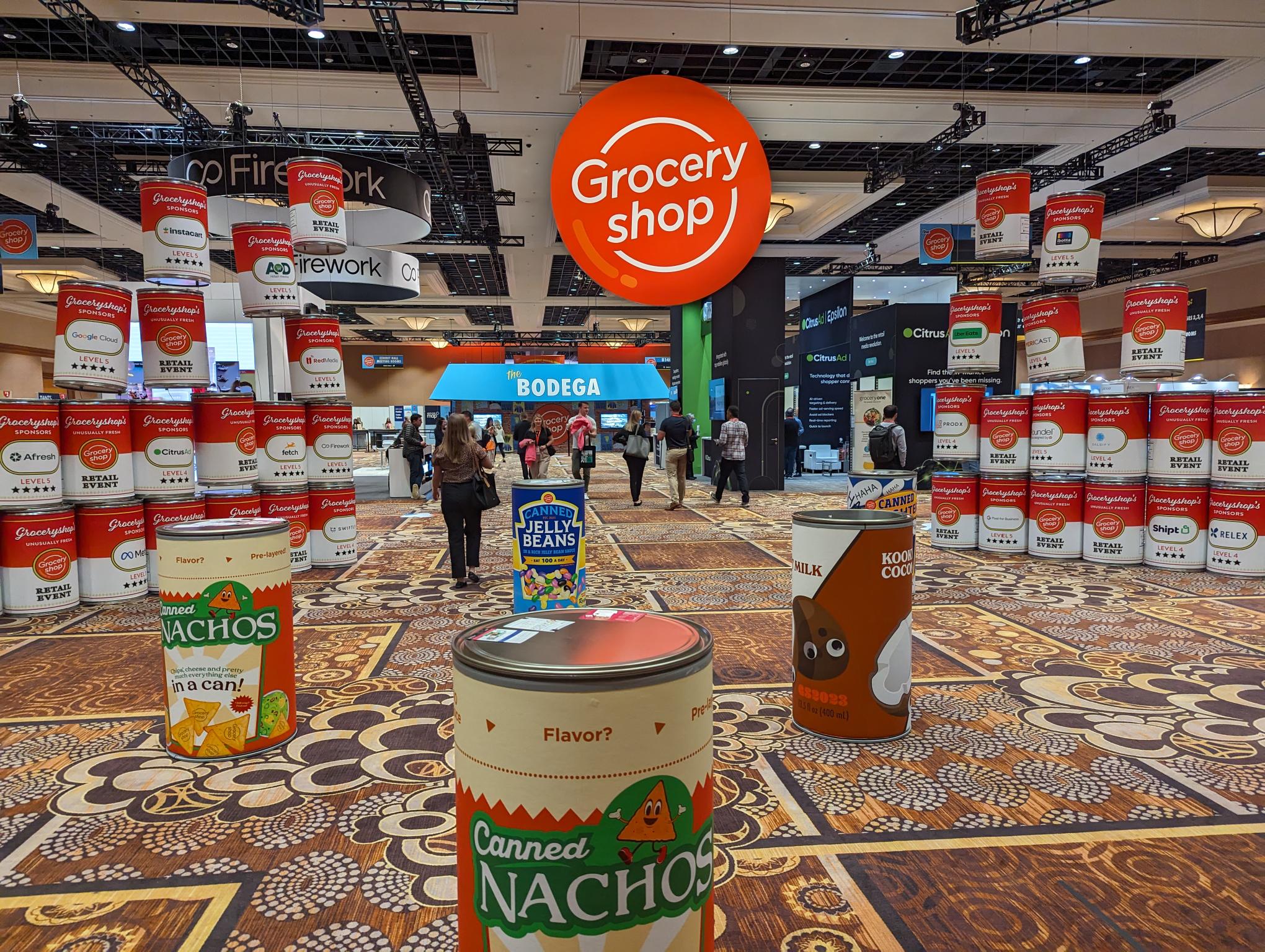Enhancing the omnichannel experience was top-of-mind at Groceryshop in Las Vegas, Tuesday.
Rodney McMullen, chairman and CEO of Kroger shared during the keynote that Kroger is on a journey to unify its ecommerce and in-store operations, both from a customer perspective, facilitating seamless conversion, as well as from the retailer’s perspective, ensuring that a purchase on both platforms are equally profitable.
Online sales are, by nature, more expensive for grocers to manage. Matt Hamory, partner and managing director of AlixPartners summarized the conundrum during a session titled “Achieving Ecommerce Profitability.”
“When you take things that normally your customers do for you for free, [shopping in-store], and you transition to doing it all yourself, it’s going to cost money and therefore be less profitable,” he said.
McMullen asserted that Kroger is working to identify and roll out alternative revenue opportunities that can subsidize online sales to achieve parity.
“Retail media would be one of the fastest growing parts of our business,” McMullen said. He added that the company’s entire “alternative profit business” earned $1.2 billion last year, which helped offset the cost of delivery. Retail media networks are advertising platforms that allow retailers to sell their ad space on their digital solutions.
In a session titled, “Moments that Matter: Delivering Connected Omnichannel Experiences” JJ Fleeman, Ahold Delhaize USA CEO, shared how the company’s retail media has quickly become a cornerstone of its business.
“Our digital media income is up about 70 percent per year,” he said. He advocates for a unified commerce experience where Ahold Delhaize's retail media online operations are incorporated into the business strategy, rather than operating on its own because they both work together to give CPGs a better shot in the market.
McMullen noted that membership in Kroger Boost is a key driver of Kroger’s online strategy, however, it offers more value through creating “sticky” customers than the income earned from the fees. As part of Kroger Boost, members who pay $59 a year can get free next-day delivery on grocery orders of at least $35. Members who pay $99 a year can get free delivery in under two hours on grocery orders of at least $35
The development of the “sticky” shopper that keeps returning to a grocer to purchase through multiple (or all) modalities—in-store, pickup, delivery, and ship-to-home—was the central focus of many in the industry.
Steve Henig, chief customer officer at Wakefern Food Corp. said that at Wakefern, omnichannel customers are twice as valuable as sole brick-and-mortar shoppers. Manish Sharma, VP and GM of omnichannel experience at The Kellogg Company, said that omnichannel shoppers can drive as much as four times the value as sole-channel shoppers.
The omnichannel experience has also been streamlined by the changing world, Henig said. The pandemic familiarized customers with QR codes, a technology that Wakefern began implementing in 2011. It received meager usage until the last few years.
Customer data also helps create personalized experiences that merge online and brick-and-mortar channels to create a frictionless, integrated shopping journey. One such feature at Wakefern is a personalized shopping list that allows customers to shop from past purchases and create a list that they can use in-store. The list can be sorted by aisle to improve the shopper's efficiency in the store.
“It’s no longer just about retail, it’s about omnichannel. There’s a ton of leak when someone goes online to purchase [something like] a paper product. They’re also looking at frozen, and more,” Bryan Crum, CEO of BeyondStore.com, a smart-cart solution for retailers that allows them to keep their current hardware, told SFA News Daily.
An investment in the online experience is crucial, as online shoppers are most frequently high spenders, said Matt Hamory, partner and managing director, AlixPartners. The implication of this, however, is that digital offerings are critical for retailers to remain competitive, as they do not want to lose these valuable clients.
Matt Van Glider, head of ecommerce and digital experience at SpartanNash, shared in a conversation with Hamory and Tiffany Hicks, VP of ecommerce, foodservice, and specialty channels at Bumble Bee Seafood, that the online experience doesn’t have to be seen negatively, either. He dispelled a common misconception that customers are missing out on incremental opportunities to grab something off a display or an end cap, and that the customer wouldn’t be as valuable.
The end cap can still be brought to life online, he said. “The digital versions of basket displays and end caps are much more comprehensive along that customer journey… There are so many different places to put these products in front of the customer outside of the store that would get people to put the items into their digital cart,” he said.
Related: Fostering Plant-Based, Retail Collaboration; Wakefern Launches Delivery Tracking

